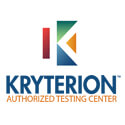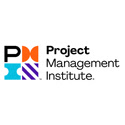Windows Server Administration Fundamentals (98-365)
About This Course
Microsoft certifications help IT personnel in validating their technical expertise through a streak of industry-relevant exams. The certifications cover a wide array of Microsoft concepts, principles and principles. Microsoft certified people tend to fetch more salary and are recognized well in the entire world of Information Technology.
The course trains you for installing, configuring and troubleshooting Microsoft Windows Server 2012 and 2008. It helps you prepare and pass the server administration exam. Windows Server Administration Fundamentals is a one of a kind and extensive Microsoft certification course, which explains you about server storage, roles, installation, configuration, maintenance and performance.
Who Should Attend This Course
- Professionals seeking to prepare for the MTA exam
- Anyone who wishes to learn about Microsoft servers, platforms and their concepts
Why This Course
Almost every support role or responsibility in the industry requires some or the other Microsoft skills. It is particularly beneficial to have good knowledge about Windows server, since tons of Windows servers go live on a daily basis thus, shooting up the demand for certified server admins to maintain, support and deploy infrastructures.
The certification is ideal for anyone interest to learn about Microsoft server fundamentals and concepts.
Plus, professionals after successful completion of the Windows Server Administration Fundamentals course will learn about the expertise and skills required to deploy and manage a Windows Server 2012 and 2008 along with basic troubleshooting skills. Most importantly, hands-on learning approach and real-world examples at Tech-Act will help you apply these skills seamlessly.
- Globally recognized
- Microsoft Server administration
- Server deployment
- Server management
- Server virtualization
- Real-world examples
Prepares for MTA exam
Course Objectives
- Server roles
- Server installation
- Storage and directory
- Server management including performance and maintenance
- Remote Access
- Virtualization
- Storage/ Security
Course Prerequisites
- Basic knowledge of computing and IT concepts
- A passion to learn about Microsoft Servers and their Fundamentals
Course Benefits
The Windows Server Administration Fundamentals course offers you training on:
- Server roles
- Server installation
- Storage and directory
- Server management including performance and maintenance
- Remote Access
- Virtualization
- Storage/ Security





























